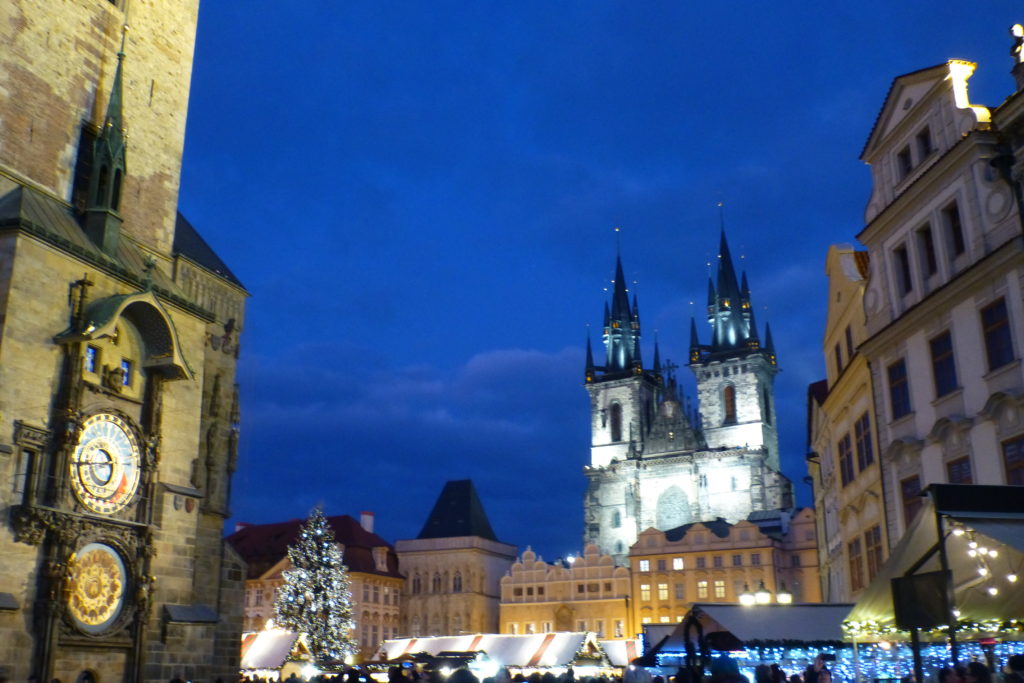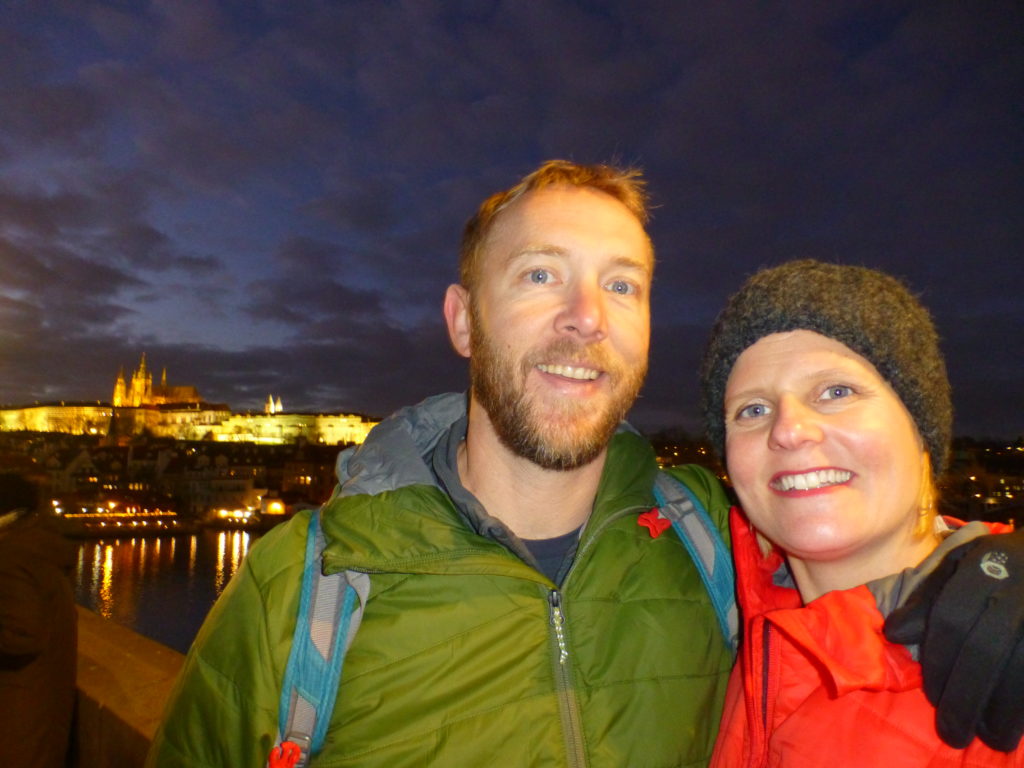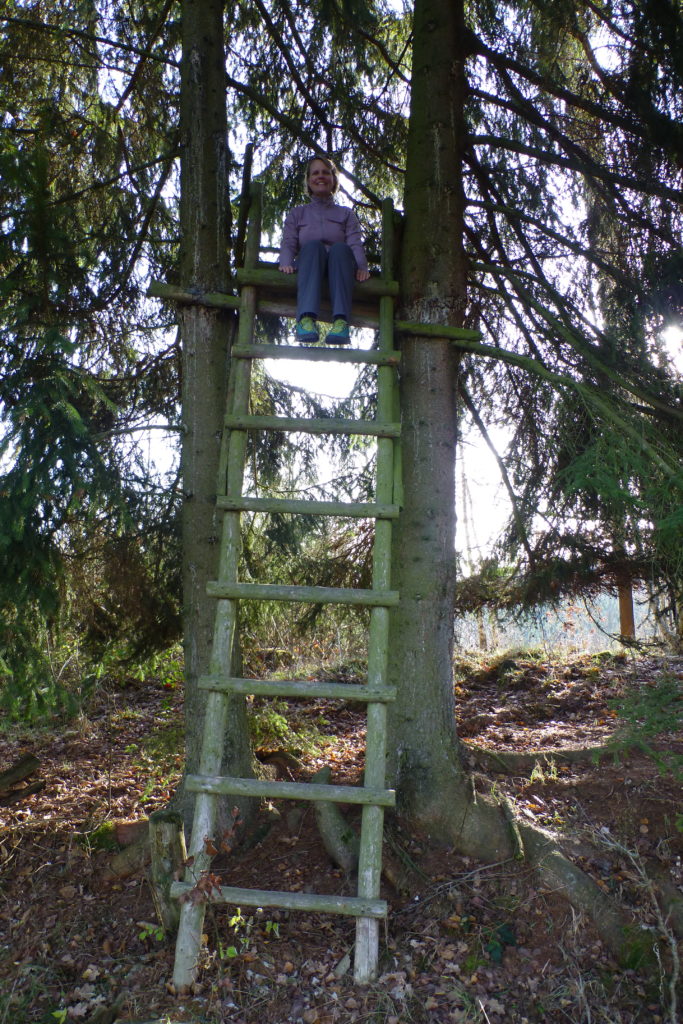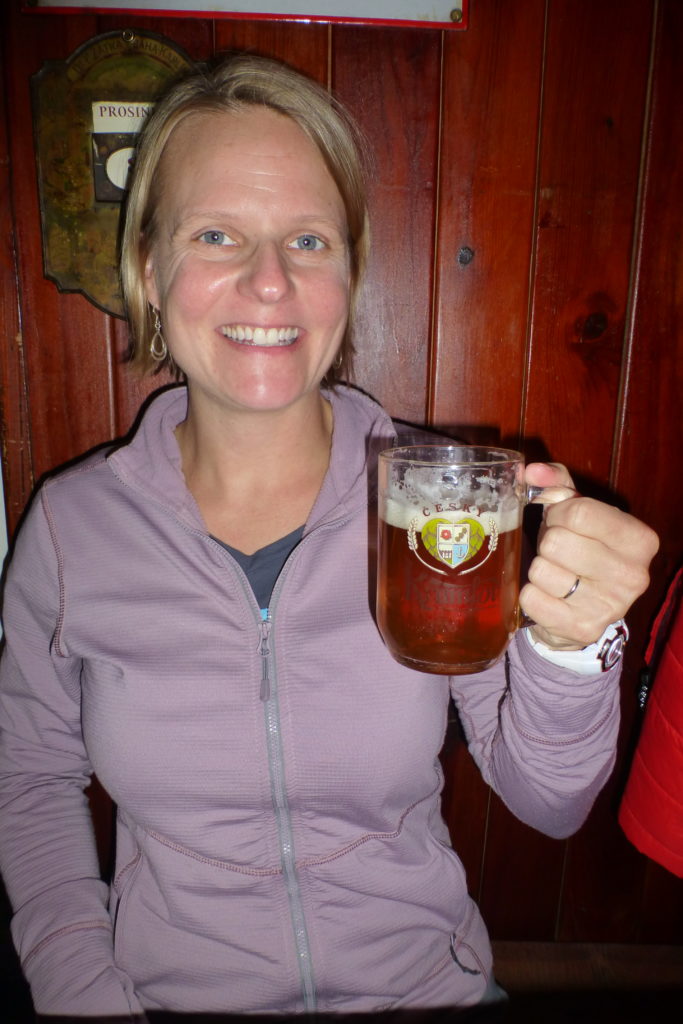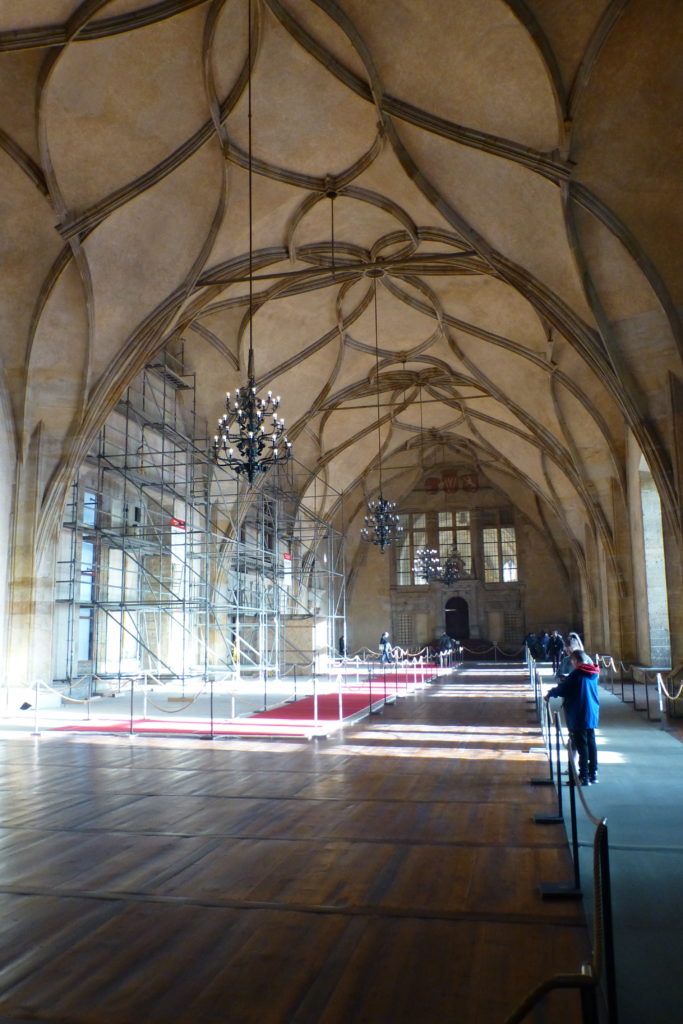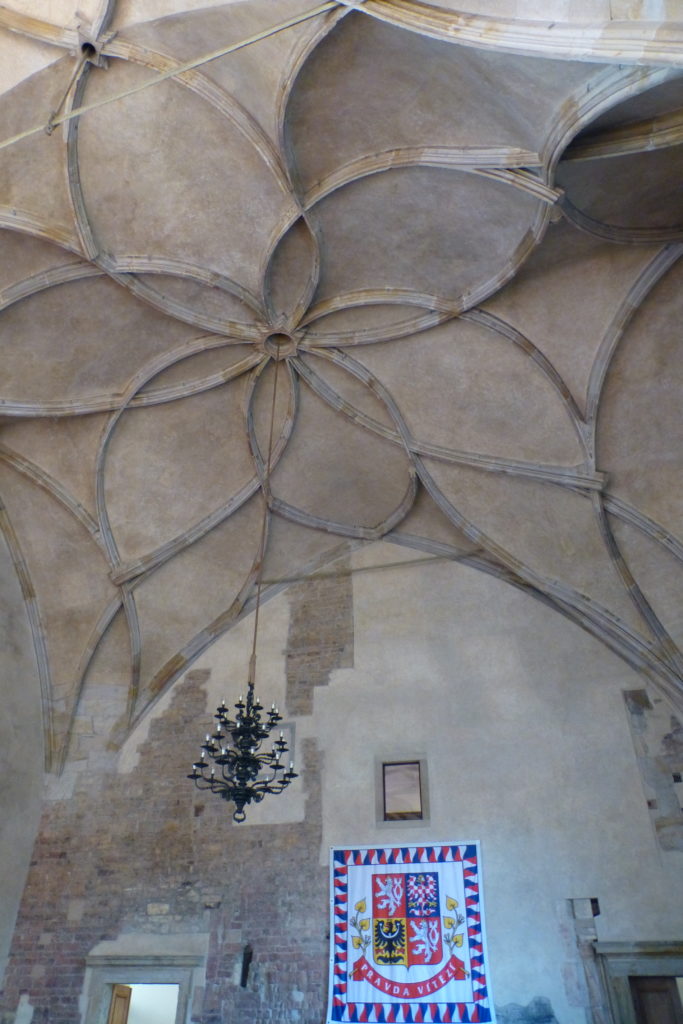As Mike mentioned in his last blog, once we had decided to head back to Central Europe to see Vienna, I quickly finished the itinerary with Prague. I was excited to explore the city of spires and to learn about the Czech Republic’s history.
On our way to Prague, we had a day layover in Cesky Krumlov. The town is tiny, but it was fun to walk through the medieval streets. Old town is full of pensions and restaurants as all the locals live in new town, so it feels a little too touristy. However, the views from the castle and nearby hills are amazing. We made the most out of the warm sunny day by taking a few random hikes to nearby hill tops. It felt great to be outside in nature, and every little bit will help us get in shape for climbing in Ecuador!


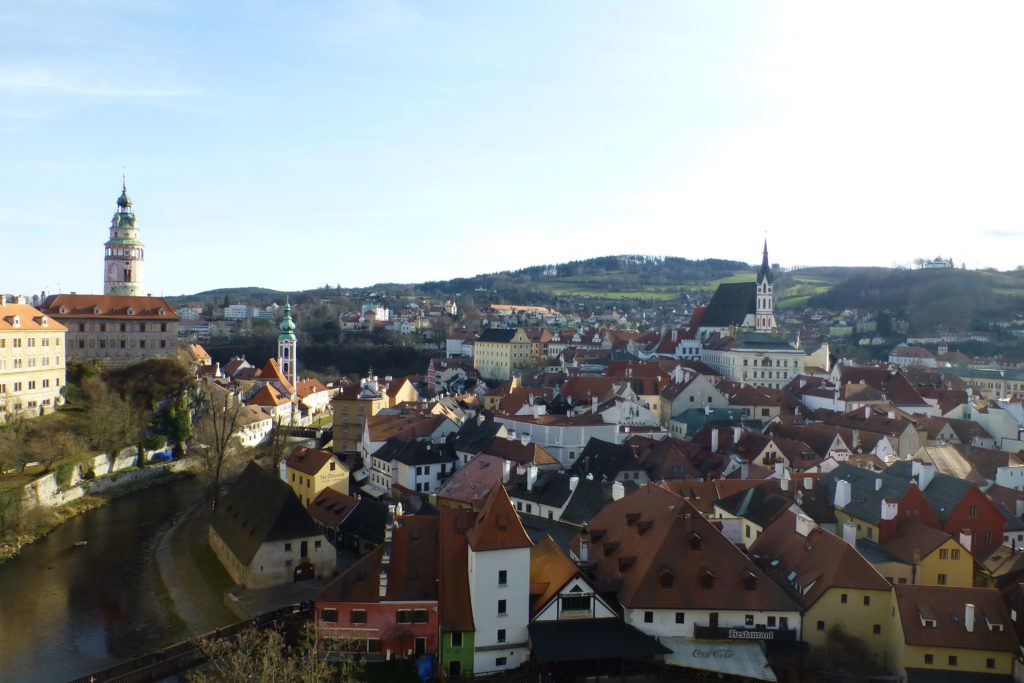
The highlight was dinner at a small local pub. The pub wasn’t busy but there were a few locals including a grandpa and his family. Midway through our dinner, an accordion player arrived. Turns out the grandpa was a singer and this pub is their favorite location to sing Czech folk songs. The other patrons in the restaurants were Czech tourists, so it turned into quite the sing-along affair with the kids dancing. It was such a fun night to enjoy the Czech beer and listen to their music!
We had 3 days to explore Prague and packed in the sightseeing. The first day we focused on old and new town following Uncle Ricky’s tour. We have really enjoyed these throughout Europe. Mike navigates and reads with his great teacher’s voice. I take the photos (only when allowed😊). Mike often impersonates Ricky making me laugh especially when we do the spin tours.
Old town square is in the heart of the city and is home to a big Christmas market. The square is awesome and very large. In the center is a moving sculpture of Jan Hus, a religious reformer, who has become a symbol of Czech Nationalism. In 1400, he led the Hussite movement to allow everyone to drink wine at communion, not just the priests. Eventually, he was burned at the stake here in the square. But the Hussites prevailed and became the main religion for 200 years until the Habsburgs overtook Czechia and reinstated Catholicism.
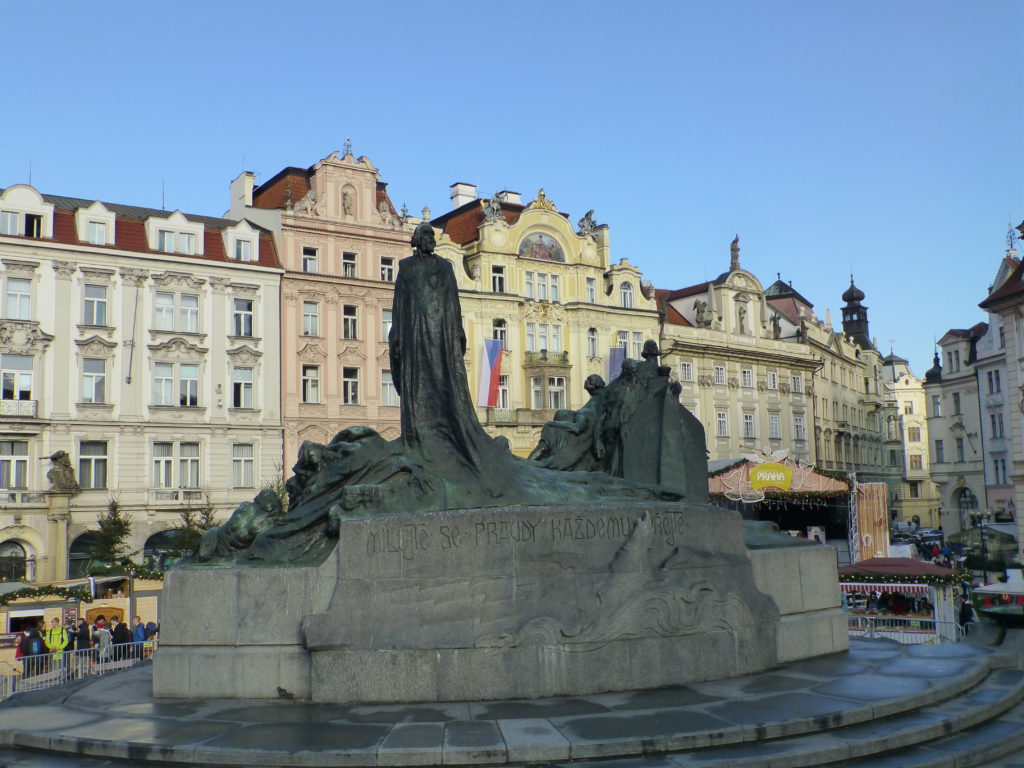
Towering over the square on one side is the Tyin church with twin fancy spires that are unlike anything we have seen before. They look so elegant and pretty with numerus small spires. The front of the church shows both its Catholic and Hussite roots…a chalice = Hussite + Mary = Catholics.
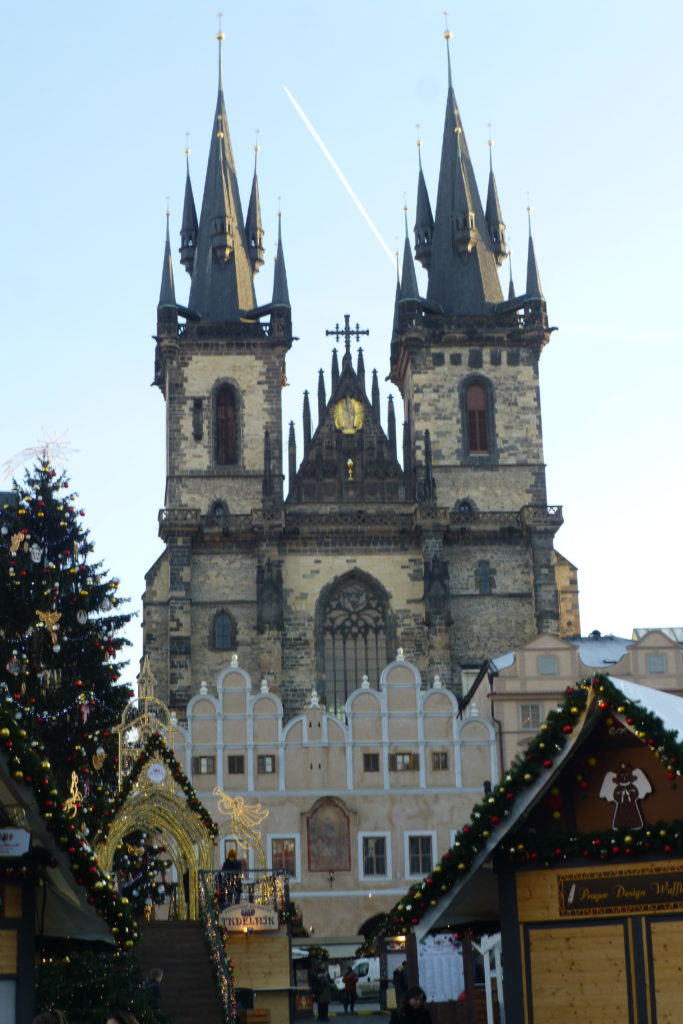
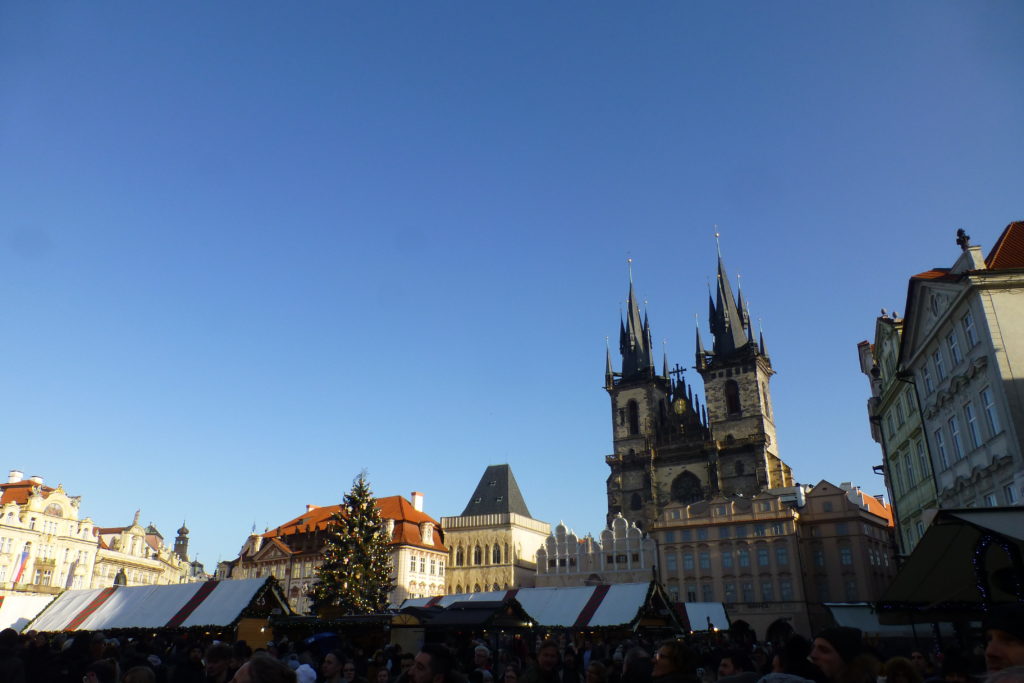
Across the square is old town hall and its famous bell tower with its astronomical clock swarmed by tourists. It is quite the spectacle! At the top of the hour, the clock does a fancy cuckoo clock-like routine. There are 4 visible statues that start to move with death pulling the bell. Meanwhile, through 2 small doors, the 12 apostles appear. At the end, the rooster crows and a tiny bell chimes. I thought it was hilarious that such a tiny bell ended this large spectacle!
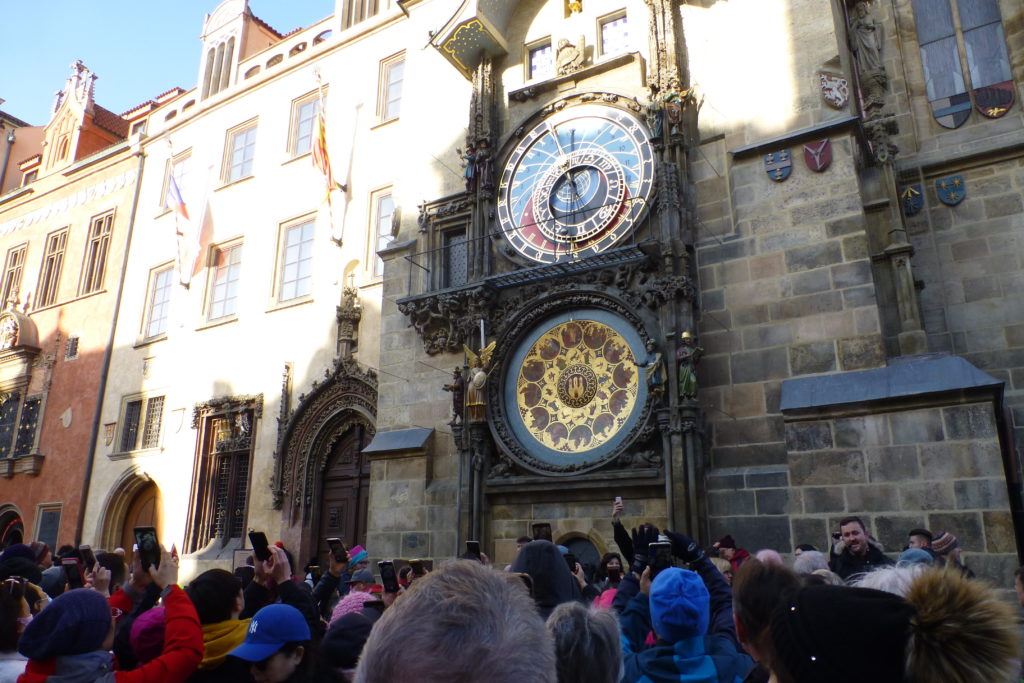
The clock itself is quite cool with many things that it tracks…time, time of sunset, zodiac signs and the daily saint. We had a fun time trying to figure out how it all worked. Amazing that it was built in the 1400’s!

Continuing our city tour, we visited the Powder Tower. It is 500 years old and the only surviving part of the old city wall. It was also the city’s formal entrance and housed…you guessed it: gun powder! There was a ton of traffic as this was the main car exit from old town. It made me thankful for the many traffic free zones that we have enjoyed during our European travels.
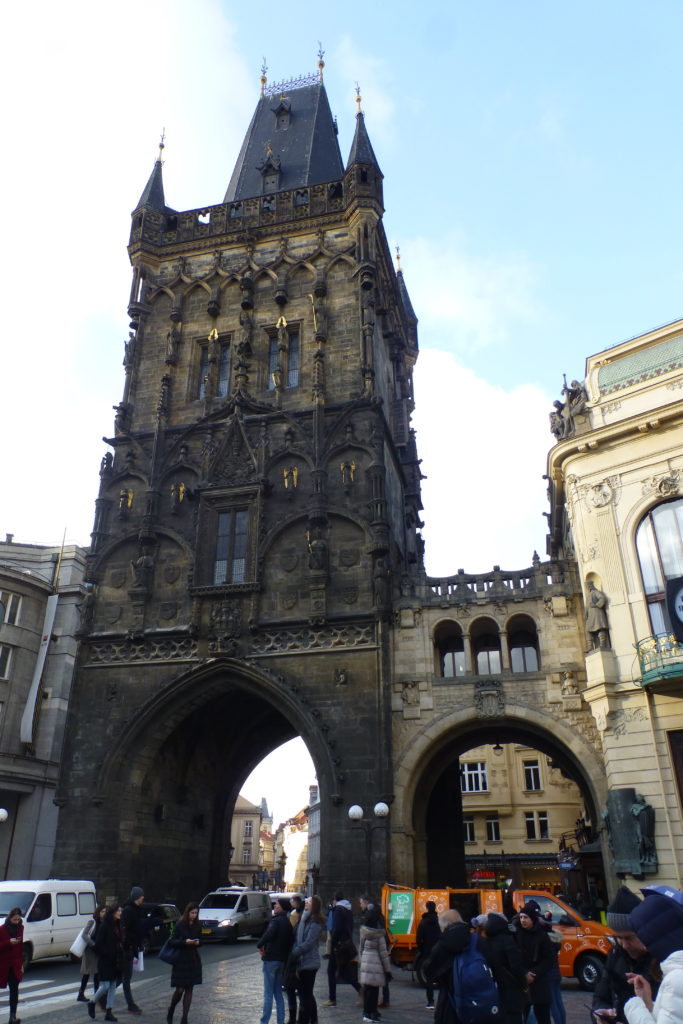
From here, we headed to the new town’s Wenceslas Square which was named for the duke who united the Czech people in 900 to create a nation. This square is the home of several key protests during the communism era including the 1968 Prague Spring. During this time, the secretary tried to lessen the oppressive restraints and let the people enjoy a little more freedom. However, the Soviets didn’t approve, so they invaded in August with tanks and over 200,000 soldiers to gain control. It was hard to imagine what that must have looked and felt liked while standing in this square!
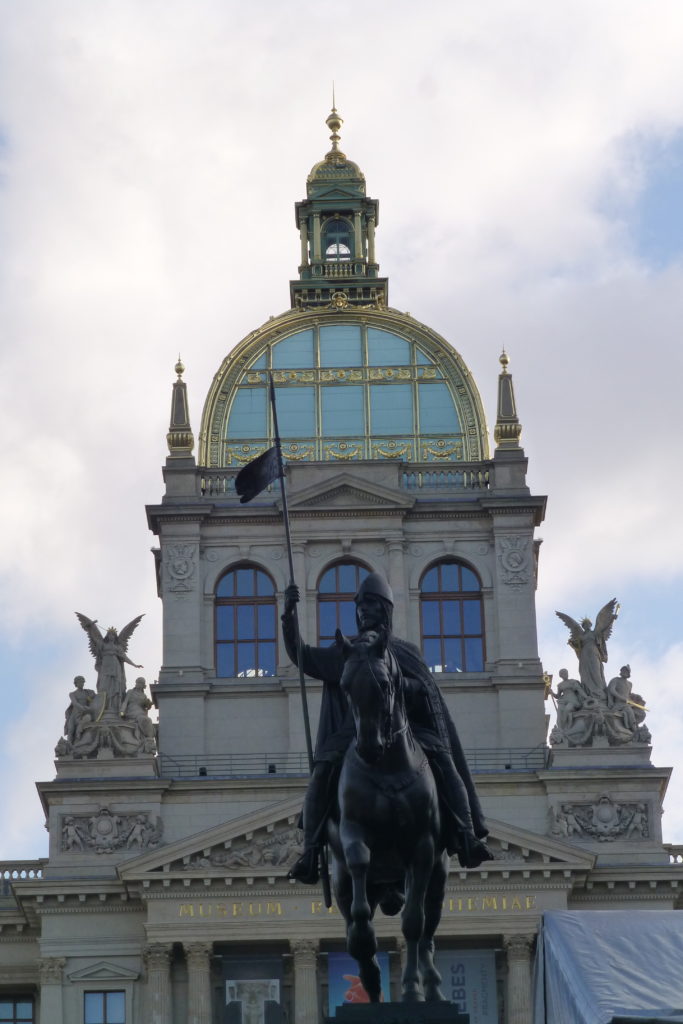
Military presence remained in Prague until the Velvet Revolution in 1989. In November, there was a student demonstration near this square that the Soviets squashed. Nine students died and a thousand were arrested. This kicked off another protest which lasted for a month. Every evening, 300k Czechs stood in this square jingling their keys to express their desire for the doors to be unlocked and for the Soviets to leave. It worked and led to a peaceful end to communism. Again, so much history in this one spot. One of my favorite parts of traveling is to learn about history and stand in these spots imagining what it must have been like. It also makes me so grateful to have grown up in the States only hearing about these events and not experiencing them.
The last stop of the day was the Jalta Hotel’s Cold War Museum located on Wenceslas Square. The museum is in a former nuclear fallout shelter that was also used to spy on the hotel’s guests. The tour was fantastic, and I felt like I was part of a spy novel. We got to see the air filtration system, escape tunnels and the telephone listening system. Our college-age tour guide was super knowledgeable and quite funny. We got to see a toilet paper roll (aka lots of thin little pieces of paper). When they ran out, they used the propaganda newspapers as they were cheap and plentiful. It was a great stop!

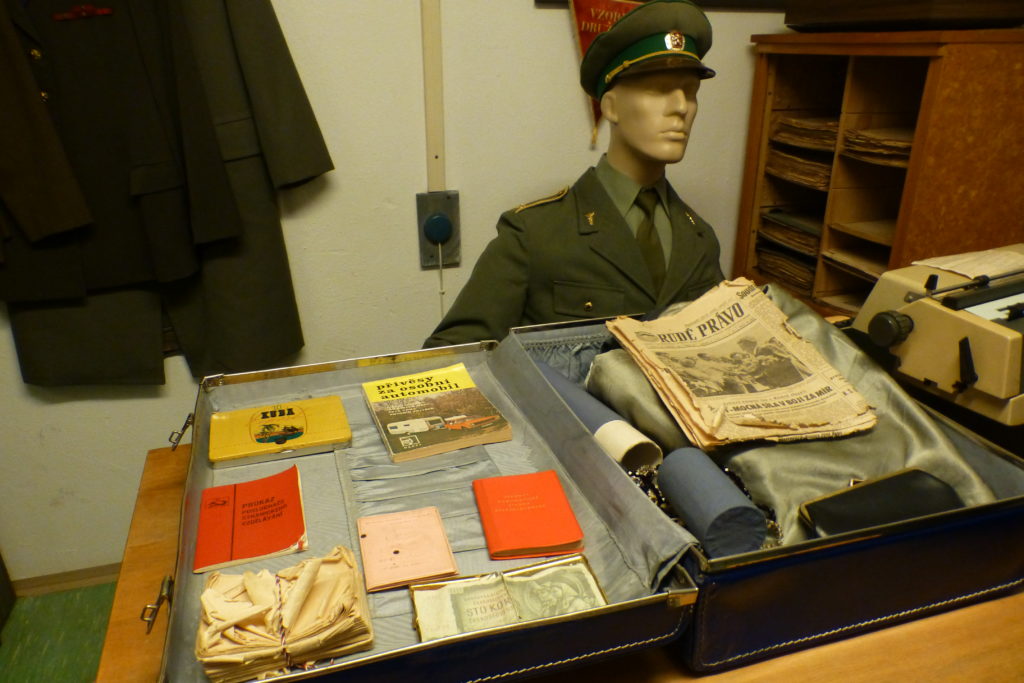
On day 2, we explored the castle area of town. Our first stop was Charles Bridge, dating from 1357. We arrived before the hordes and were rewarded with amazing views with good morning light! The bridge is 7 football fields long and was the only bridge for 400 years. The bridge is lined with statues of saints that were added during the Habsburg’s rule to remind the citizens to be good Catholics.

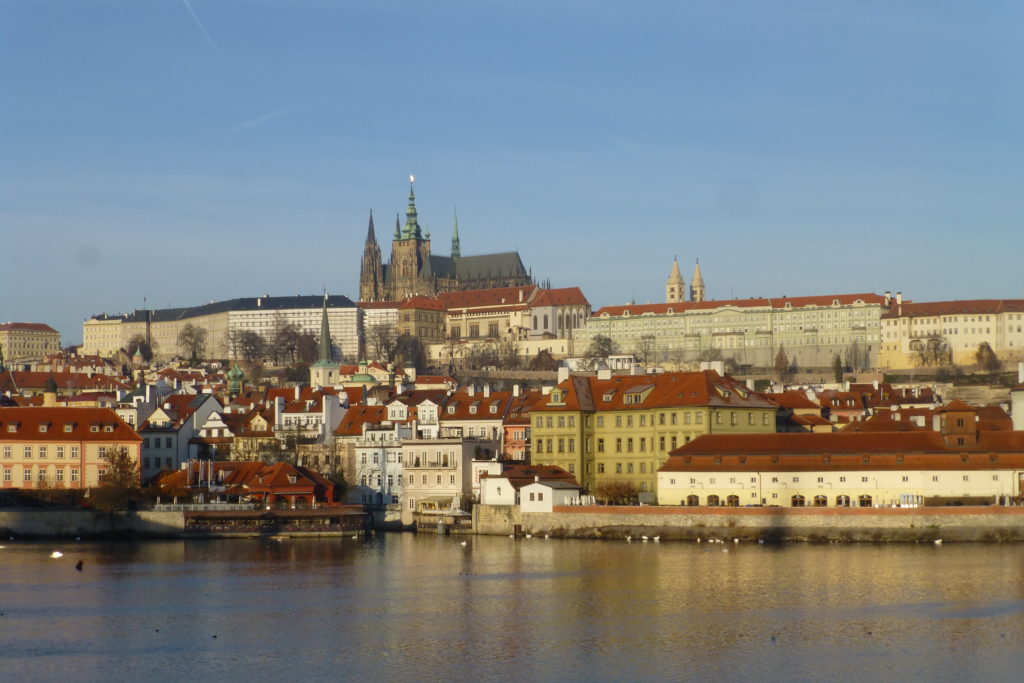
From the bridge, we walked up the steep hill to the castle square. We were happy to see that we had again beat the rush and opted to tour the St. Vitus Cathedral first. The cathedral is pure gothic with its spires, flying buttresses and vaulted ceilings. The first thing you notice when you enter is the light. The front of the church is flooded with it and draws you inside. The church took forever to be built; started in 1344 and finally finished in 1929! Halfway down the aisle is a slight lift in the floor which indicates the half that was finished first.
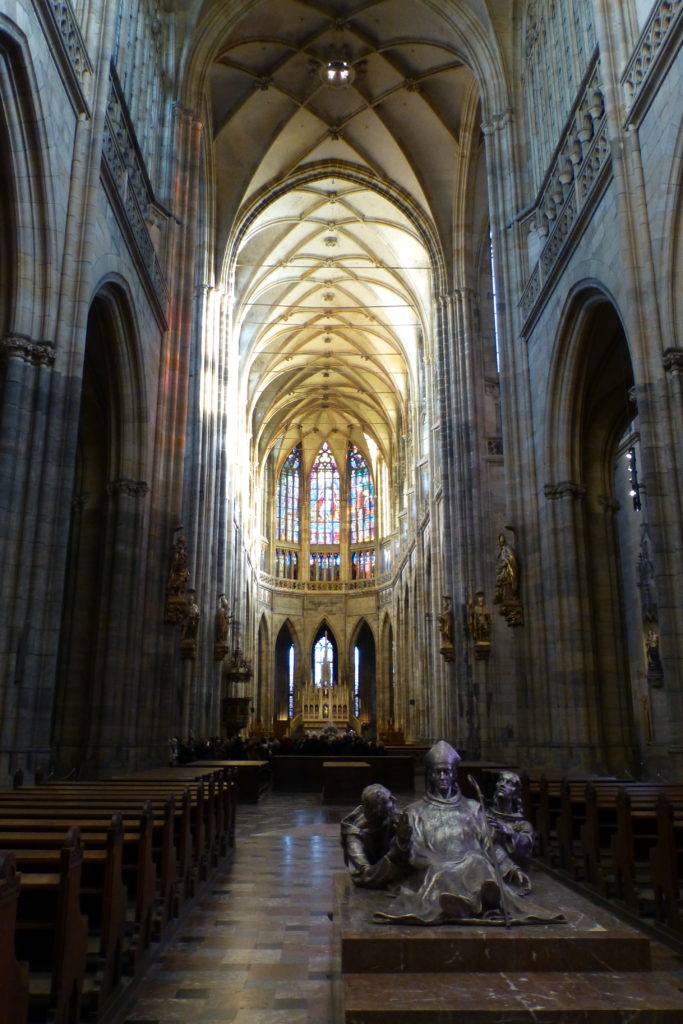
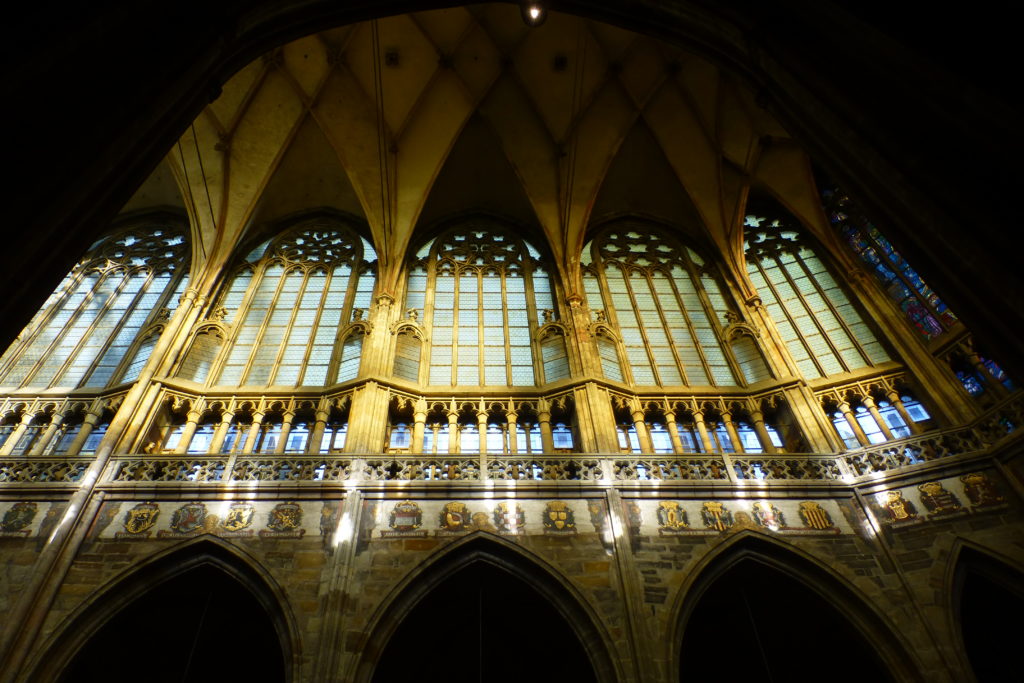
My favorite part was the Wenceslas Chapel. Historically, the kings and queens were coronated in this chapel and the crown jewels are still stored here. They are in a special safe that has 7 unique keys held by 7 different Prague citizens.
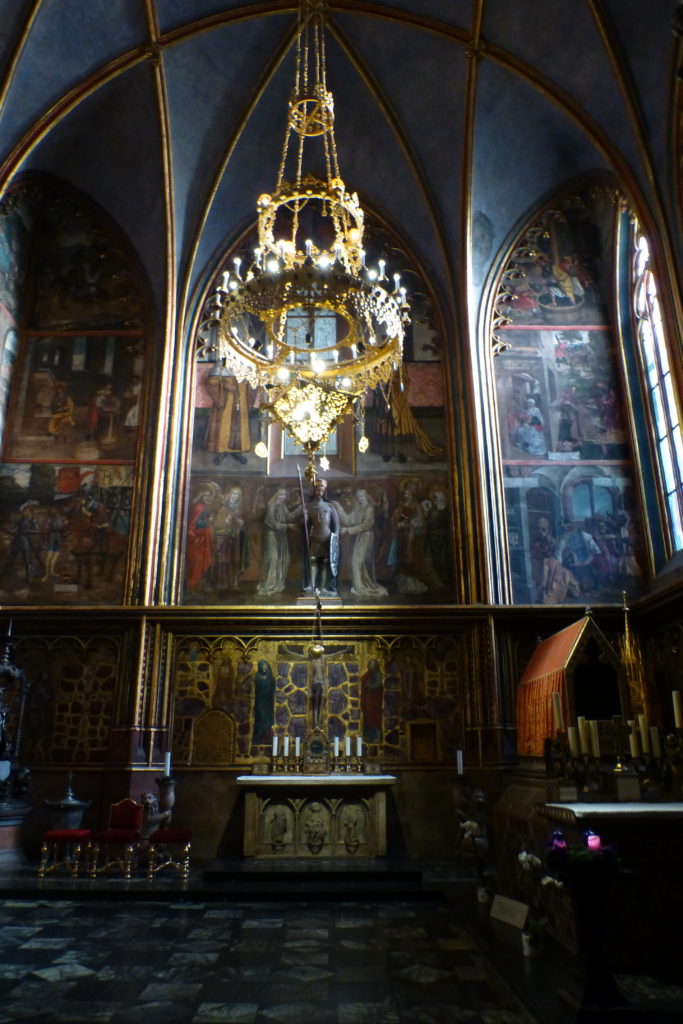
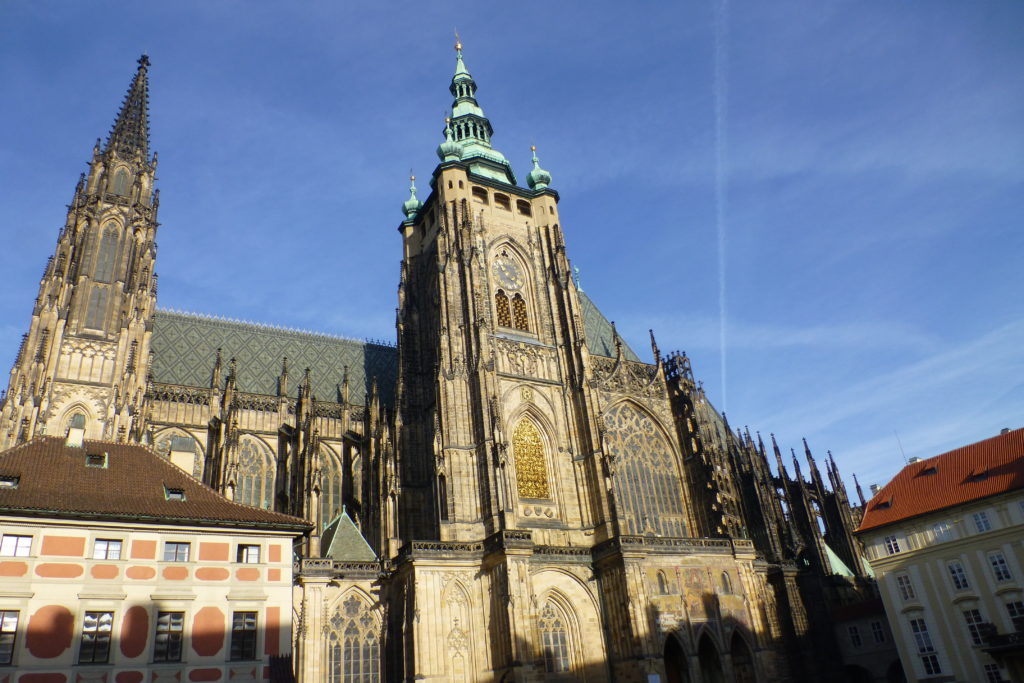
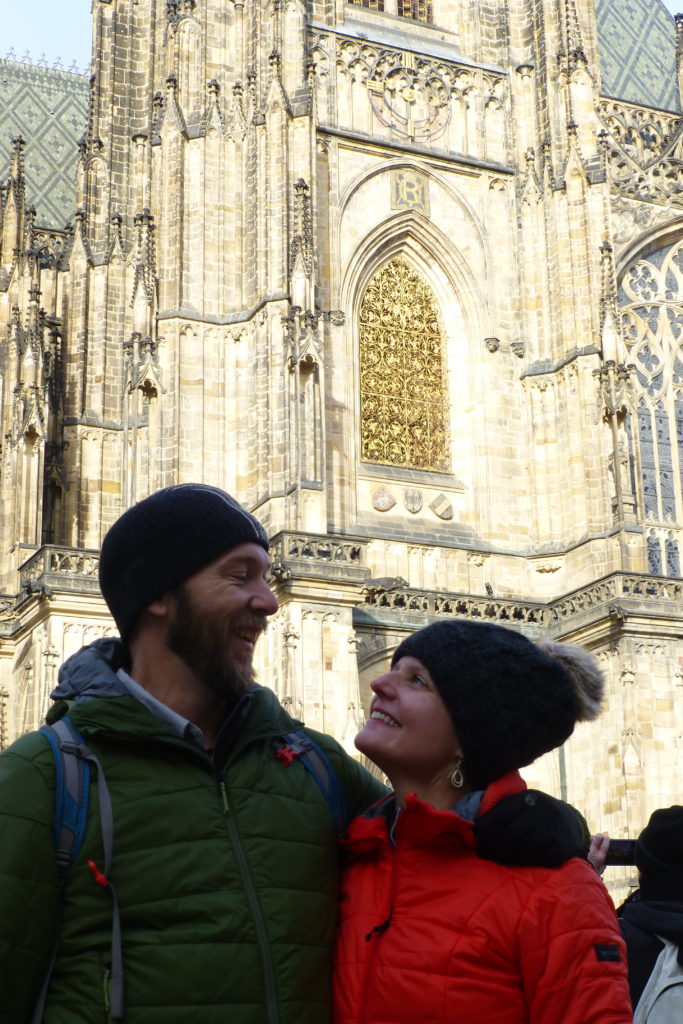
After touring the church, we went into the old palace. The great hall was huge as they built it long enough to joust indoors! The best part was the interlacing ceiling which added a nice detail to the giant space.
Following our full morning of touring the castle area, we opted for lunch at the nearby monastery’s brewery. It was founded in 1628, and the beer was awesome! I ordered a grilled cheese thinking it would be nice on a cold day. Well, it literally was just grilled cheese! Delicious, but not quite what I was expecting.
We were tired by our 3rd day in Prague, so we opted for a low-key morning to catch up on journals and the blog. Luckily, our hotel had a cozy living room with a fake, crackling fire and classical music. It was the perfect place to enjoy an extra cup of coffee and catch up. We also enjoyed it each evening as they provided free wine!
After our relaxing morning, we decided to tour the Jewish Quarter which was right down the street from our hotel. The Jews were forced to live in this swampy area in very tight quarters with many restrictions and super high taxes. In the 1890’s, many of the medieval buildings were demolished to make way for wide streets and Art Nouveau style buildings. Most of the synagogues survived and are open to the public as museums.
Our first stop was the Pinkas Synagogue which has been turned into a memorial for victims of the holocaust. The walls are covered with 77,297 names of Czechia Jews who died. The names are handwritten and organized by city and name. Every wall of the 16th century synagogue is covered. While touring, you listen to a recording of the names being spoken. Of the 55k Jews in Prague in 1940, only 10k survived, and only 3k live in Prague today.
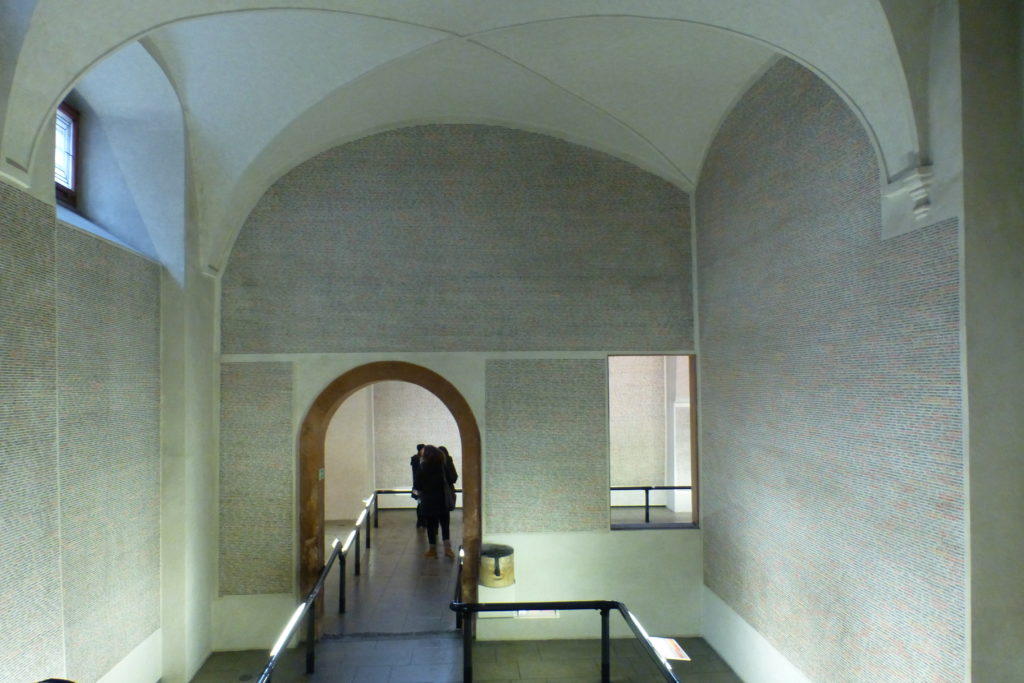

Upstairs is an exhibit of children’s drawings from the Terezin camp outside of Prague. The teacher in the camp, had the children draw these and hid them away when she was sent to another camp. She survived and retrieved the drawings to tell the stories. Most of the children died. It was heartbreaking to see the children’s interpretation of their daily lives.
Outside the synagogue is the Old Jewish Cemetery. This was the only legal cemetery for 400 years, and over 85k people are buried here with 12k crooked tombstones. Space was limited, so they buried on top of each body raising the level of the ground to 6’ above current city street level!
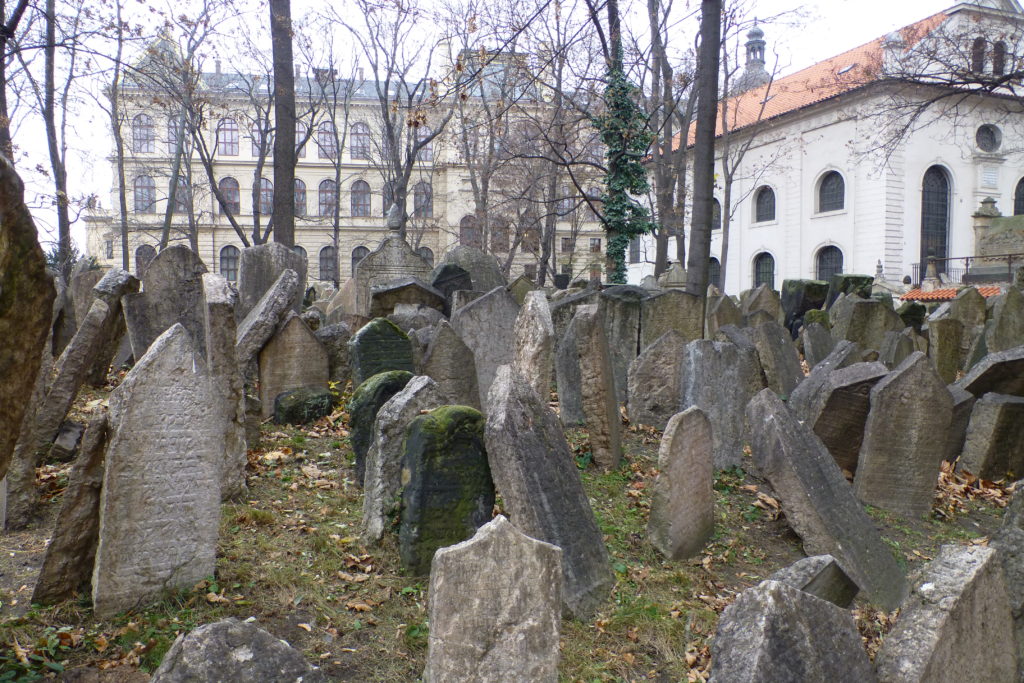
Our last stop of the day was the Old-New Synagogue, which is the oldest in Central Europe, built in 1270. It is 6’ under modern street level. The inside is gothic and quite Christian looking as it was built by Christian stone masons most familiar with building churches.
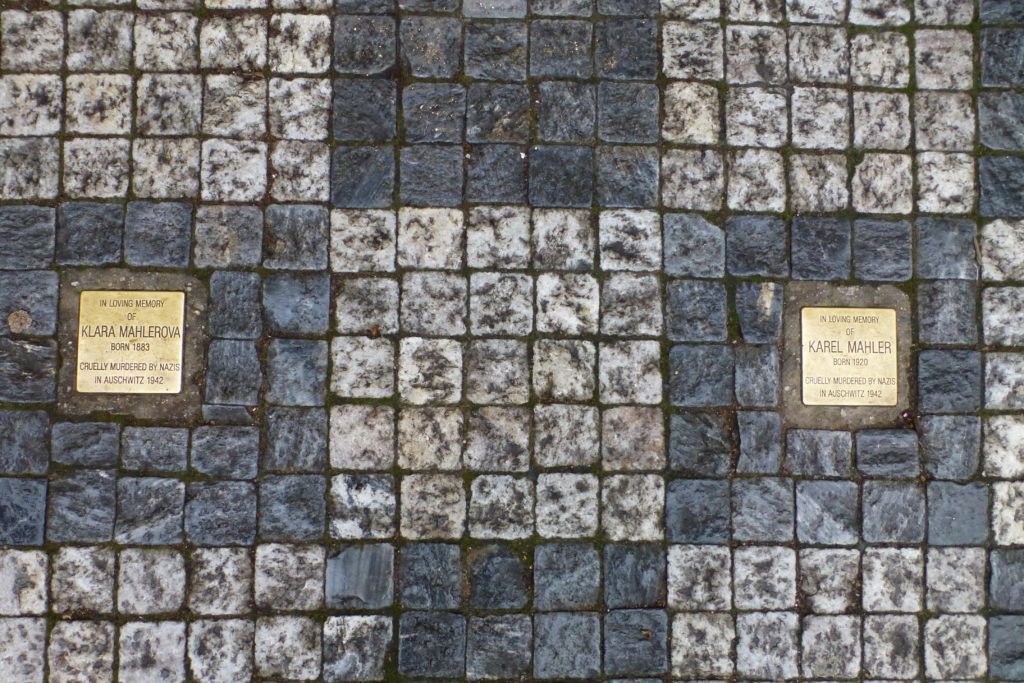
Prague held up to my expectations and it is such a beautiful city. The sightseeing was awesome, and I really enjoyed learning about their fascinating history. It was a great last stop of our Central Europe tour before heading to our last stop… Paris!
